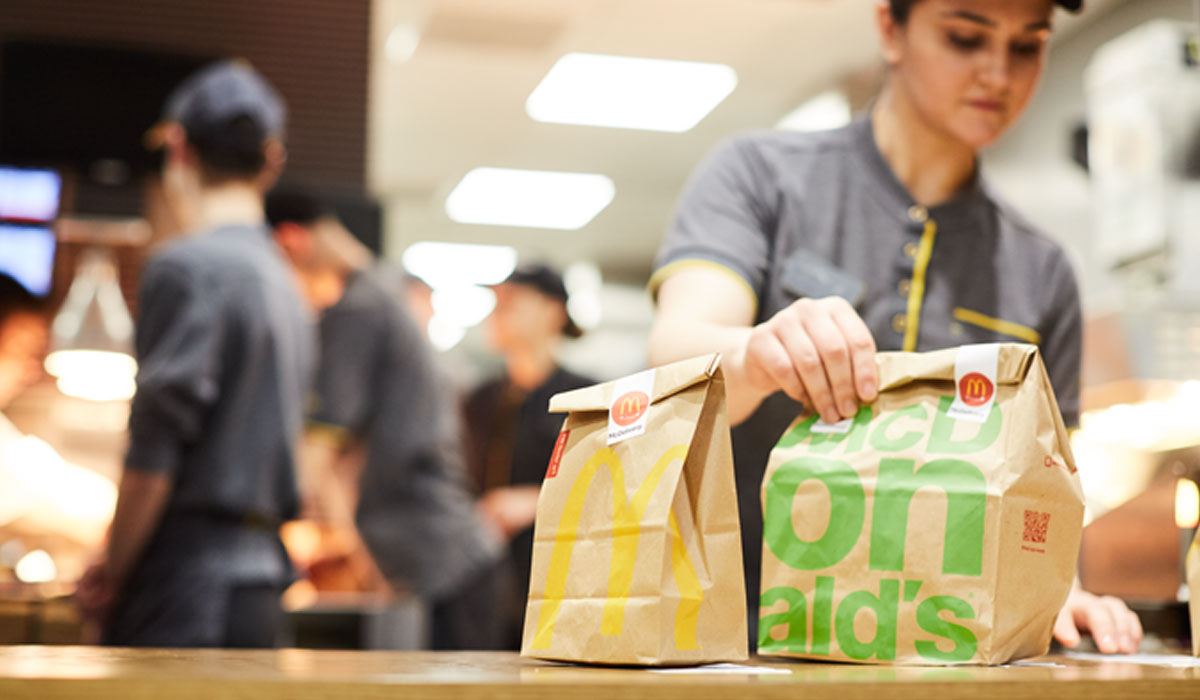In the midst of the current global pandemic, quick-service restaurants are being forced to reevaluate their place in a society reorganizing itself with haste. Cultural norms have shifted, at least for the time being, and will likely have lasting effects. As a result, consumers are developing new habits as an increase in food delivery accelerates. “Social distancing” is now part of our lexicon as well as our everyday lives. Naturally, this has a dramatic impact on how we purchase, obtain and consume our food. That restaurants must restructure their operations and services is a foregone conclusion. The only question is, which of the two paths available should they take near-term for better profitability.
Like every other industry, restaurants must adapt to new government-mandated restrictions around community gathering, but it must also navigate ubiquitous food safety concerns. That means quick-serve brands must start by restructuring their operations for delivery and pickup as their primary mechanisms, as well as implement new protocols for food safety. There are essentially two options for restaurants:
- Partner with an existing service for pickup and delivery, such as Uber Eats or GrubHub
- Create their own delivery network utilizing current staff on their payroll
Let’s analyze each option within the context of a sharply different climate and top-of-mind food safety concerns.
Option No. 1: Partnering With An Existing Outsourced Food Delivery Service
The first route restaurants can take is to utilize an existing system, like Grubhub. The advantage of this approach is that it offers a lower barrier to entry. There’s a new process that you will need to adopt, but it’s not a heavy lift to apply an existing system to an existing business. It does, however, present less control on how food is handled once it leaves your restaurant, you can’t control what the driver does before or after pickup. The restaurant doesn’t know what, if any, food safety and social distancing guidelines the driver is adhering to while they represent your brand.
Another disadvantage worth noting is that the small profit margins of delivery through a third party, like Uber Eats, was previously mitigated by a stable of in-restaurant diners. It was a volume play, with apps like Uber Eats essentially handling the overflow. Without that core business, however, the model starts to fall apart.
The reality is that choosing to partner with an existing service may keep some revenue flowing in the short term, but will generate very little profit to sustain the restaurant. This option only benefits restaurants if consumers return to their normal behavior in the next few months. Otherwise, it works as a bridge strategy, at best.
Option No. 2: Build Your Own Delivery Service
The second option is owning the delivery system. This allows the restaurant to repurpose existing employees on the payroll and make them delivery drivers. In this model, a single restaurant or national chain can leverage a cloud-based delivery platform in order to implement their own food deliveries. Here, restaurants have control over the end-to-end delivery and brand experience, are able to better conform to food safety guidelines and keep 100 percent of the revenue.
This option also enables the restaurant to enhance the customer experience, especially with regard to social distancing. Just a month ago, the standard procedure for delivery followed this path: a consumer places an order, a delivery person knocks on said consumer’s door and directly hands the consumer their order.
However, new social distancing guidelines and concerns about surface contamination preclude this kind of interaction today. Instead, restaurants should aim to create a customer experience that maintains social distance and clear, real-time communication. For example, modern delivery driver platforms that provide real-time tracking where consumers can see the delivery arriving in real-time right from their mobile phone, notify a customer upon arrival, leave an order at a safe distance for customer pickup, and take an image of the delivery as a record and as a form of communication.
Here’s another significant benefit of this approach: restaurants will be able to retain more of their employees. Instead of outsourcing the delivery portion, which would force a company to lay off some of its employees, the restaurant can instead repurpose existing employees as delivery drivers within the new system. Not only would this approach save jobs, but such a move also represents a significant step toward enhancing the customer experience, as quick-service restaurants would have the opportunity to train their employees according to general guidelines as well as brand guidelines. In other words, a restaurant would be able to maintain a higher degree of quality control through the entire process, from food preparation to delivery.
While quick-service brands may dismiss building their own delivery network, it’s more viable than ever in such a volatile environment. This option allows for greater employee retention, with restaurants keeping 100 percent of revenue, as well as more control over quality and the customer delivery experience. Brands that opt to outsource the delivery portion of their business as a way to wait out the storm may find themselves waiting longer than they expected. Whether this is the proverbial “new normal” remains to be seen, but one truth that has emerged from this crisis is that those who adapt quickly come out ahead.
Joe Thull is the head of North America for Radaro, a cloud-based delivery platform that specializes in last-mile delivery, the final customer touchpoint and keystone of the customer delivery experience.









